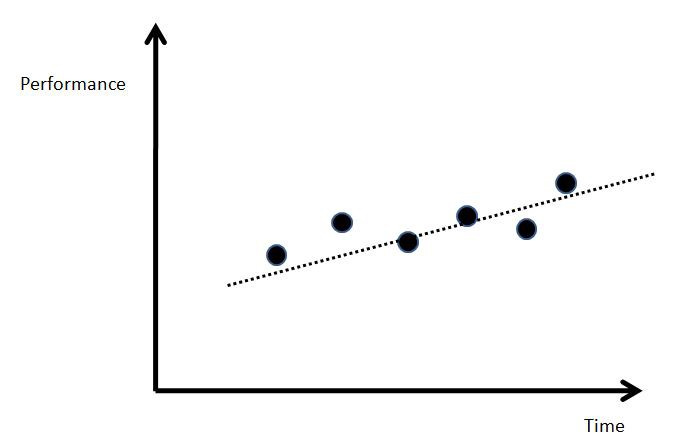Dots, Not Lines
On the increasing importance of founders controlling their time in market
I recently revisited Mark Suster's well-known post Invest in Lines, Not Dots. This post, written 11 years ago, was in my opinion at one point required reading for all founders and new investors. Unfortunately, as times have changed, Lines, Not Dots, is no longer a dominant strategy for founders today.
The general point of Suster’s post is that investors want to see multiple data points that connect over time (a line) instead of a single data point (a dot) and thus founders should meet with investors early, so that the investors can see progress, understand patterns, and build a relationship.
Suster goes on to detail an investment where he had 15+ meetings with a founder before investing, something that would be considered not founder-friendly and probably blow the minds of newer VCs today. Despite this, historically there are multiple examples over the years that firms have pointed to in which they pass on a first round only to invest in the same company later on (we did this with Talkspace at Compound, among others).
Ironically, Suster also writes in the post that "everyone seems to be in such a rush to get shacked up these days", while discussing his difficulty in doing a deal that is moving too fast, and warning founders about the severity of taking on money too quickly.
The grass really is always greener, as history repeats itself 11 years later.
Dots, Not Lines
In today's venture market VCs are inundated with amazing companies/founders/possibilities at seemingly every turn. Despite these previous tales of "lines not dots" investing, I increasingly believe that founders must be careful about how much of a line they let investors see and thus, how strong their single data point or dot is.
Dots, not lines.
Because of the constantly shifting goal posts and stories of "crazy" rounds getting done, I see a tendency for founders to want to test the upper bounds of the market with their fundraises, at times resulting in them either going to market too quickly or with too large of an ask for their next round capital, striking out, and then raising a bridge or settling for a more "traditionally" sized round (whatever that means).
Part of my job as an investor is to try to bring those conversations back to earth and understand the game theory dynamics at play. Increasingly it is difficult for founders to trust a single data point when the internet is filled with glory stories of 300x+ ARR multiples, pre-launch growth rounds, and more.

I've written ad nauseam about the power of controlling your narrative in the market and by "being in market" often, whether or not investors will ever admit this to you, you've created a series of data points in an investor's head that you have misjudged your ability to raise, failed to execute, or just weren't desirable to their peers. This is almost regardless of the progress your company has made.
Put more bluntly, VCs get tired of hearing the fundraising pitch of a company multiple times. In 2021, among a deluge of possible investments, they want hot dots, not well-trodden lines, and their interest will likely look like the chart I made above.
Because of this, founders need to be very careful about the conversations they have with later-stage investors, the messaging they give around when they are fundraising or not, and take more seriously the implications of "going out to market early and if we don't get the valuation we want, we have plenty of runway to keep building".
While revenue/PMF can solve all problems, with deep tech companies or those who measure progress on non-consensus quantitative milestones, this is a dangerous game to play where your "story raise" will look weaker than it did 6 months prior when you "tested the market" and every VC has talked about passing on your company with their peers from then until now.
The best founders moving forward know when to paint a beautiful picture of their dot on the chart and force investors to believe in the up and to the right line they've drawn about the future, something that has only become easier for founders to do, due to the volume and scale of successes that have occurred since Suster’s post in 2010.
—
I'll finish this note with a slightly tangential comment which is that, I feel that as each passing week goes by and I find myself thinking about the structural changes of our markets and my job as an investor, there are new realizations that either could be paradigm shifts that reverberate for the next decade of the innovation waves I believe are coming...or will be market top signals.

